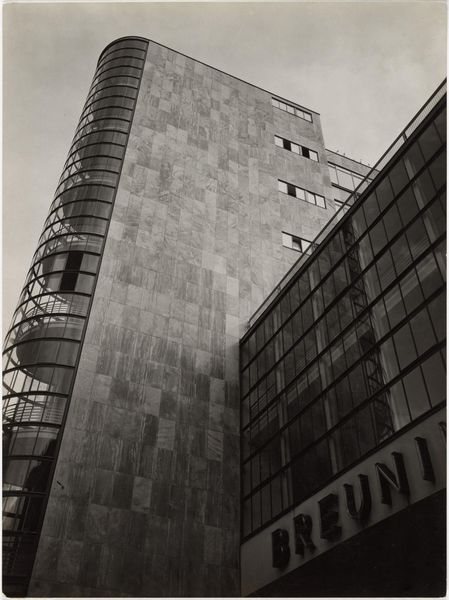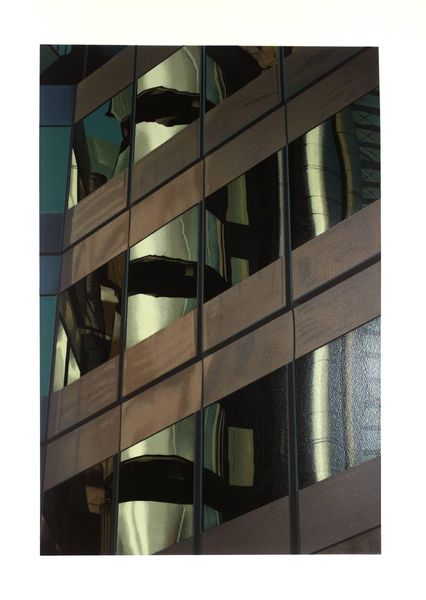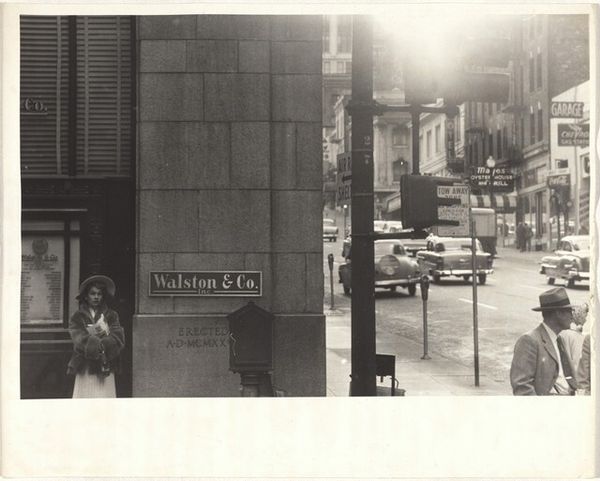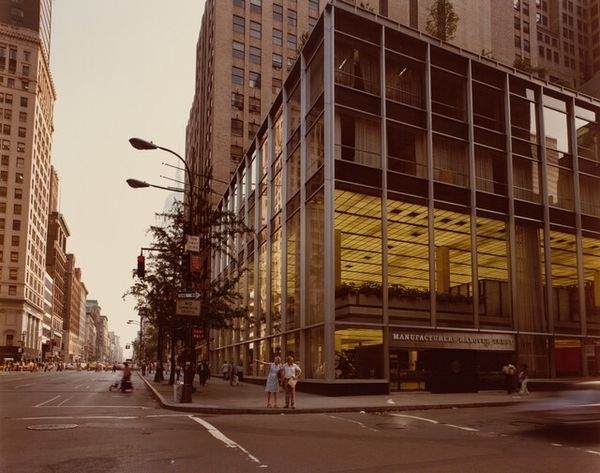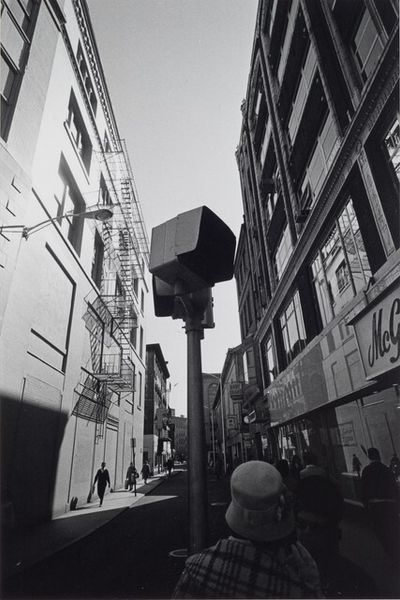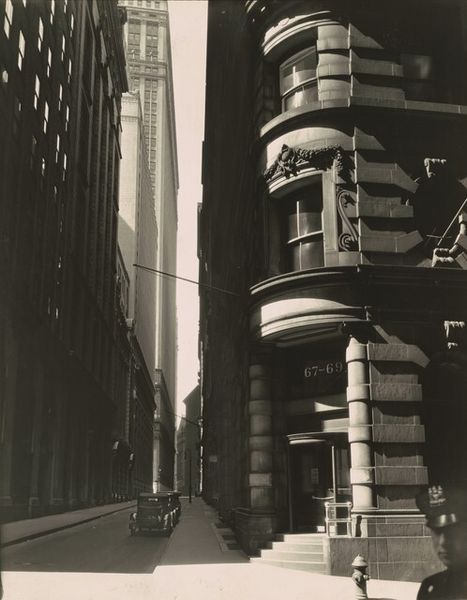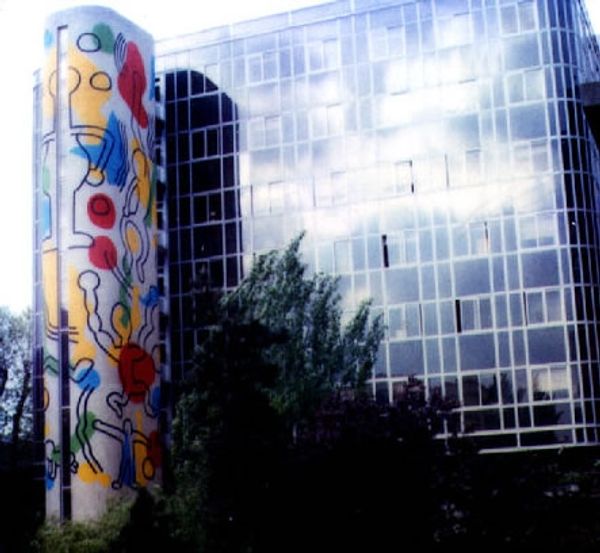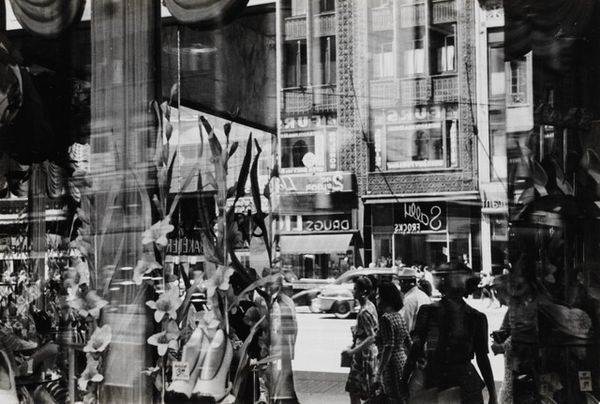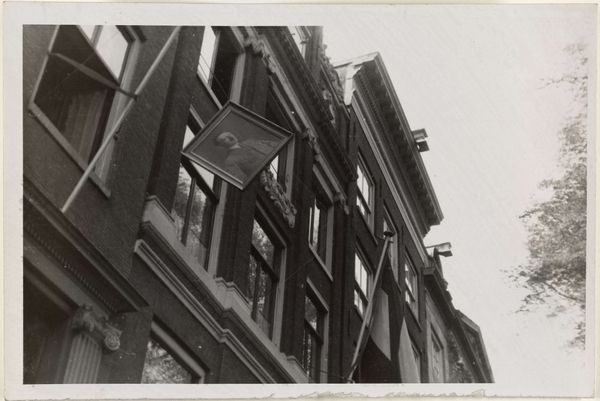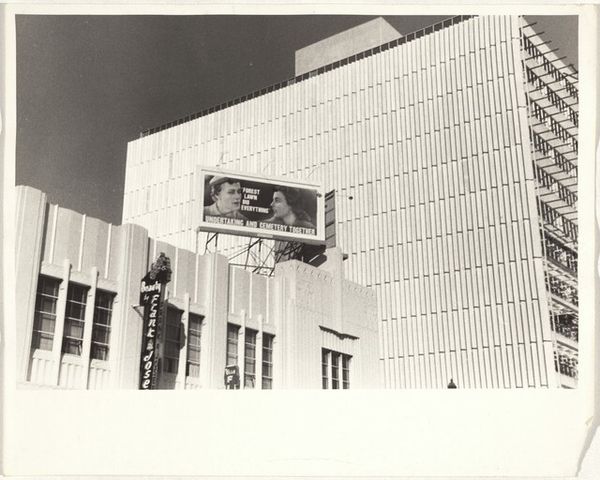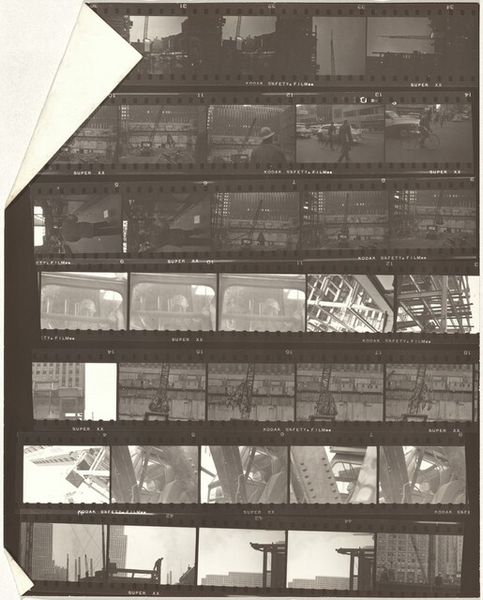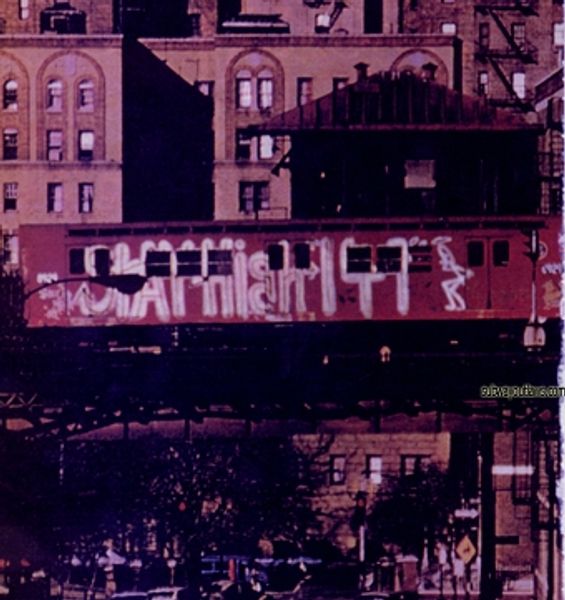
Dimensions: image: 18.73 × 18.42 cm (7 3/8 × 7 1/4 in.) sheet: 23.5 × 20.96 cm (9 1/4 × 8 1/4 in.)
Copyright: National Gallery of Art: CC0 1.0
Editor: Harry Callahan's "Multiple Exposure: Nude on Building, Providence," a C-print from 1971... I find this image so strange! The juxtaposition of this massive nude photo on the side of the building, with a woman standing innocently below. What strikes you about it? Curator: Well, it certainly offers a lot to unpack! For me, it raises questions about the male gaze and its pervasive presence in urban spaces, doesn't it? Think about how advertising utilizes the female form, often without consent or agency. Editor: I see what you mean. So, the woman in the image...she's almost being confronted, or maybe even dwarfed, by this idealised image? Curator: Exactly! It’s about the power dynamics embedded in our visual culture. This photograph places the female subject alongside this large image in a really uncomfortable way. Do you think Callahan is being critical here, or simply observing? Editor: It's hard to say. I initially read it as humorous, this bizarre contrast, but now I'm wondering if there's more critique intended. The banality of the setting adds to the impact too. This sort of imagery isn't unusual even if its placement is unexpected. Curator: Precisely! It invites a closer look at the normalization of these images. Considering feminism’s rise in the 1970s, it's also important to consider how such an image interacts with societal shifts. What do you take away now from this "normalization"? Editor: It’s more loaded than I initially thought. Callahan, even unintentionally, highlighted a complicated reality of gendered space in our society and opened that issue for public discussion. I feel empowered by the questions raised through that photograph. Curator: Absolutely! This image really pushes us to analyze our everyday environment for the underlying assumptions about power and gender, and it reveals those questions through this very arresting and somewhat unusual composition.
Comments
No comments
Be the first to comment and join the conversation on the ultimate creative platform.

